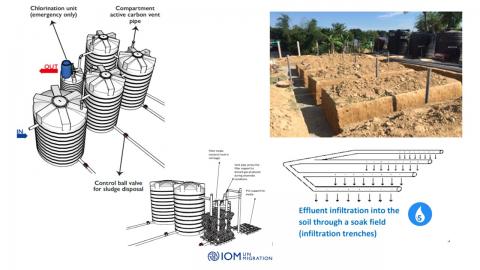IOM Decentralized Wastewater Treatment System (DEWATS)in the Rohingya refugee camps in Cox’s Bazar, Bangladesh.


Description of the emergency context
Some 929,606 Rohingya refugees currently reside in 33 congested camps formally designated by the Government of Bangladesh. Following the outbreak of extreme violence in Rakhine State of Myanmar on 25 August 2017, an estimated 687,000 Rohingya refugees crossed the border into Cox’s Bazar, Bangladesh. Persecution has driven Rohingya refugees across the border into Bangladesh repeatedly. Significant influxes have occurred following violence in Rakhine State in 1978, 1992, 2012, and again in 2016. By far the largest and fastest refugee influx from Myanmar into Bangladesh began in August 2017. The IOM WASH Unit in Bangladesh is the area focal agency for 12 camps and has been working in Cox’s Bazar since 2014. From the influx in August 2017, the unit has been coordinating the overall WASH response in its area of responsibility. IOM also works with partner agencies to ensure the ongoing operation and maintenance (O&M) of facilities. In highly congested settings, such as the Rohingya camps, WASH actors face challenges to deliver faecal sludge treatment processes which provide an effective removal of pathogens. The challenges are largely due to limitations on space, which places constraints on to the ability to include appropriate, safe and sustainable aerobic processes in the treatment train.

Project Details


Pathogen reduction
Solid/liquid separation
TSS and TDS reduction

Infiltration
Upflow filter




Sludge

FSM specialist for design
Local contractor for construction
Local NGO for operation and maintenance
Still have questions?
You could not find the information you were looking for? Please contact our helpdesk team of experts for direct and individual support.

